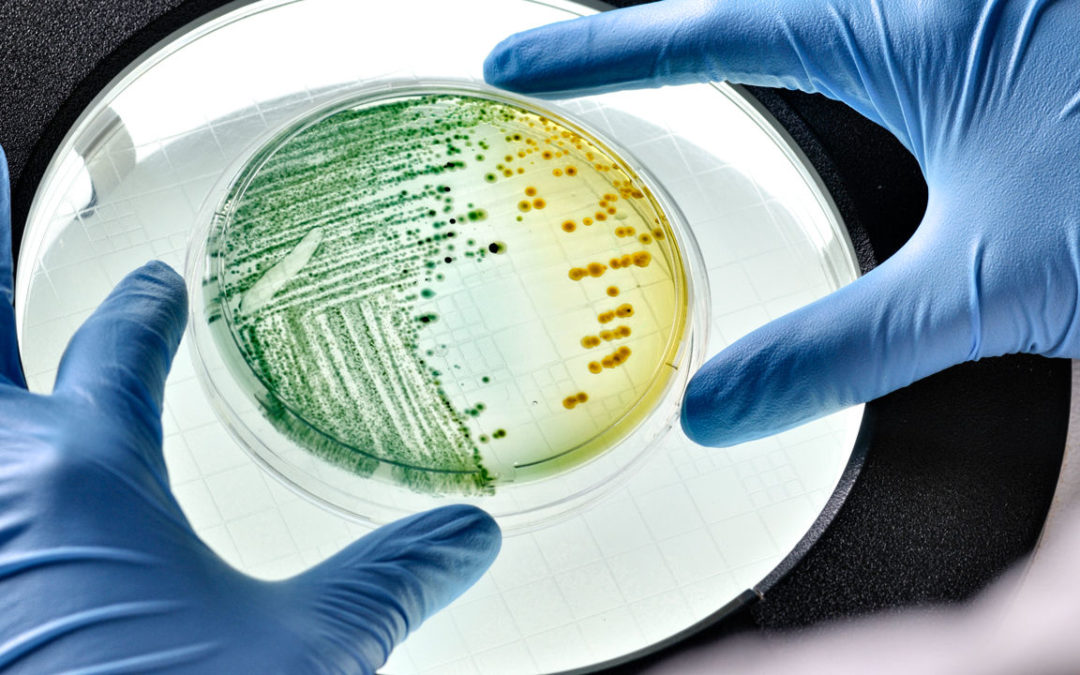Escherichia coli bacteria can convert electrical pulses into bits of DNA stored in their genome.
Scientists ‘program’ living bacteria to store data
Hard disks and optical drives store gigabits of digital data at the press of a button. But those technologies—like the magnetic tapes and floppy drives before them—are apt to become antiquated and unreadable when they are overtaken by new technology. Now, researchers have come up with a way to electronically write data into the DNA of living bacteria, a storage option unlikely to go obsolete any time soon.
“This is a really nice step” that might one day spur commercial development, says Seth Shipman, a bioengineer at the Gladstone Institutes and the University of California, San Francisco, who was not involved in the new work. He notes, however, that real-world applications are a long way off.
DNA is attractive for data storage for several reasons. First, it is more than 1000 times as dense as the most compact hard drives, enabling it to store the equivalent of 10 full-length digital movies within the volume of a grain of salt. And because DNA is central to biology, the technologies to read and write it are expected to become cheaper and more powerful with time.
Storing data in DNA is not a new idea. To do so, researchers typically convert a data file’s string of digital ones and zeros into combinations of the molecule’s four bases: adenine, guanine, cytosine, and thymine. They then use a DNA synthesizer to write that code into DNA. But the accuracy of DNA synthesis decreases the longer the code gets, so researchers typically break their file into chunks and write those into snippets of DNA between 200 and 300 bases long. Each snippet is given an index to identify its location in the file, and DNA sequencers then read the snippets to reassemble the file. But the technology is expensive, costing up to $3500 to synthesize 1 megabit of information. And the vials of DNA in which information is stored can degrade over time.
To create a long-lasting, easier to encode medium, researchers are now working to write data into the DNA of living organisms, which copy and pass their genes on to the next generation. In 2017, a team led by Harris Wang, a systems biologist at Columbia University, used the CRISPR gene-editing system to recognize a biological signal, such as the presence of the sugar fructose. When researchers added fructose to Escherichia coli cells, gene expression increased in bits of ring-shaped DNA called plasmids.
Next, CRISPR components—which evolved to defend bacteria from viral invaders—chopped the overexpressing plasmid into pieces and lodged some of it into a specific section of the bacteria’s DNA that “remembers” previous viral invaders. The inserted genetic bit represented a digital one. If the fructose signal was absent, the bacteria instead stored a random bit of DNA, representing a digital zero. Sequencing the E. coli DNA then revealed whether the bacteria was exposed to fructose, via a one or zero.
But because this setup could store only a couple of bits of data, Wang and his colleagues replaced the fructose-recognition system with one that could encode longer strings of information: an electronic input. They inserted a series of genes into E. coli that enabled the cells to increase plasmid expression in response to an electric voltage. As with the fructose setup, an increase in expression caused the digital one to be stored in the bacteria’s DNA. To read out the ones and zeros, the researchers simply sequenced the bacteria.
Using this approach, Wang and his colleagues electrically encoded up to 72 bits of data, to write the message “Hello world!” they report today in Nature Chemical Biology. They also showed that they could add E. coli with their message to a mix of normal soil microbes—and later sequence the mix to recover their stored message.
Wang says it is still early days for the storage of data in living organisms. “We’re not going to compete with the current memory storage systems,” he says. The researchers will also need to come up with ways to prevent their messages from degrading as the bacteria mutate as they replicate. But at least for now, it may give James Bond a new tool for hiding messages in plain sight.
This content was originally published here.


